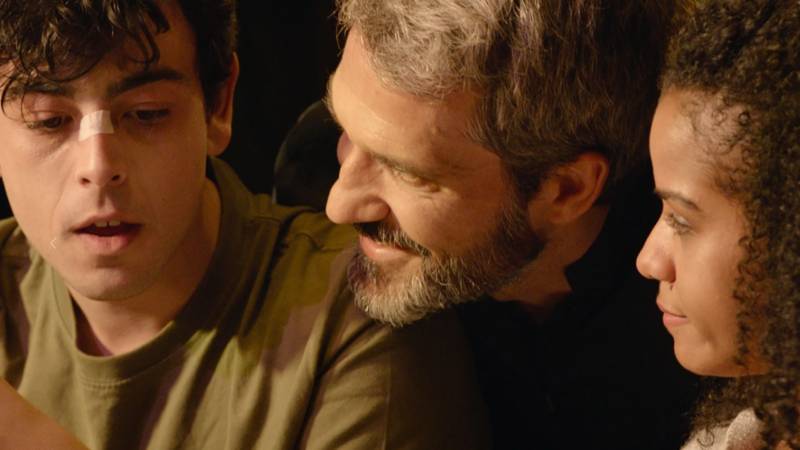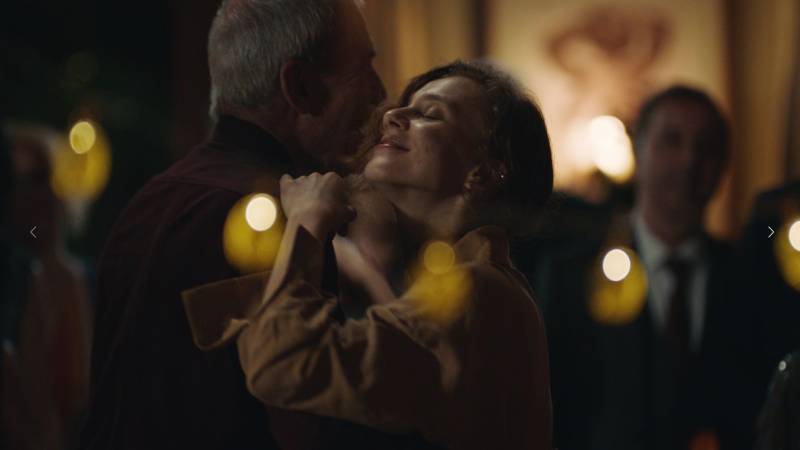T[/dropccap]he documentary opens on two old men watching footage of a band called Sharks. The band, it seems, were a band led by Free bassist Andy Fraser, and enjoyed a modicum of success in their native England. The camera returns to the two men, who introduce themselves as Sharks bandmates Steve Parsons and Chris Spedding. What follows is a film that demonstrates these veterans of 1970s rock familiarising themselves with the trappings of the 21st century. They make a joke that The Clash won’t be turning up in the feature, but what we get is a strangely insightful look into the workings of a London rock band. Better still, it’s a very funny doc.
“Did I have fun [on cocaine],” Spedding muses. “Yes. Do I regret it? No.” Spedding made a name for himself in the 1980s, working as a session player beside a collection of big names (he worked with Paul McCartney on ‘No Values’.) Parsons – incidentally, a co-director of the film – flitted between singing and acting in the intervening years, but there’s no denying the sparks behind his eyes at he arrives on stage. Spedding too speaks of the group with great fondness, telling an interviewer – conveniently wearing a ‘Who The Fuck Does She Think She Is..’ t-shirt – that he prefers playing guitar to singing. More humorously, Spedding and Parsons are learning as they go, coming up with zingers and catchphrases as the film envelops. “What’s my motivation?” Spedding asks. “Money,” comes the reply.
We see an excited teenager attending their concert, happily comparing them to the other albums in his personal collection. Parsons is captured speaking on radio, stating that Sharks were a “supergroup” of sorts who represented the sound of the era. Spedding, meanwhile, autographs for a queue of fans, many of them as old as he is. But Parsons is nevertheless determined to make Sharks a viable proposition for the new decade, utilising websites and applications to generate support.
Schematically, Not A Rock Doc (A Shark’s Tale) bears something of a resemblance to Let It Be (Michael Lindsay Hogg, 1970), although the tone is ultimately more positive than The Beatles work. This isn’t a film about breaking up, but about piecing something that was thought to be broken back together. It doesn’t hurt that Spedding and Parsons are joined by Tosh Ogawa on bass, bridging a gap between their generation and the younger audiences. Spedding sounds fiery during some of the instrumental sections, invoking raw blues in the process.
In a strangely moving segment, Toshio Nomura speaks of his unwavering support for the outfit. Spedding seems moved by the support for the band, particularly in this digital era. But the analogue instrumentation adds a dimension that is somewhat missing from the music in the modern circuit. Parsons quips that although it has been forty years since the band started, they can still rock out. No, the film doesn’t luxuriate from a high budget, but this gives it a strangely holistic vibe to it that makes for compelling viewing.
Sex Pistols fans will enjoy the appearance of drummer Paul Cook, but the focus is almost entirely on Spedding and Parsons, two old friends who have been on many rodeos together. They share war stories (Spedding is spotted in a Womble costume in a funny interlude), yet never take their eyes off the present. Where the band will go next with their music, it’s too early to say, but there’s no doubt that whatever the project is, it will be very interesting , and no doubt there will be a solo or two in it. Not A Rock Doc (A Shark’s Tale) is a very good work.
Not A Rock Doc (A Shark’s Tale) premiered at the Doc’n Roll Film Festival.











